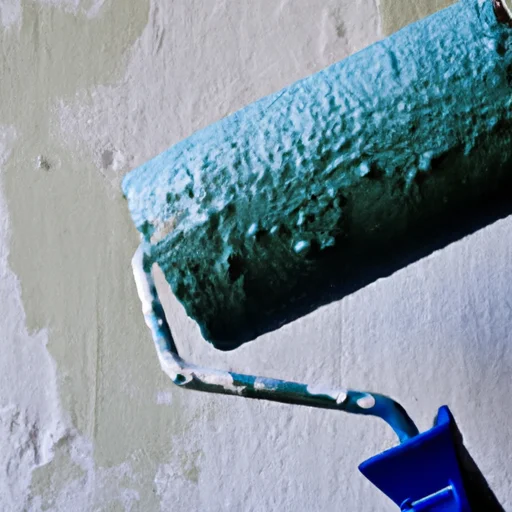When it comes to giving our walls a fresh coat of paint, we often wonder if we really need to go through the tedious process of priming before diving into the actual painting. “Do I Need To Prime Before Painting Over Old Paint” aims to answer this age-old question once and for all. With detailed insights and expert advice, this product provides homeowners with the ultimate guide to achieving a flawless and long-lasting paint job without the hassle and uncertainty of priming. So, if you’ve ever found yourself pondering this dilemma, look no further than “Do I Need To Prime Before Painting Over Old Paint” for the definitive answer.
Do I Need To Prime Before Painting Over Old Paint?
Table of Contents
Determining the Need for Primer
Evaluating the Condition of the Existing Paint
Before deciding whether to use a primer, it is important to assess the condition of the existing paint. Look for signs of peeling, chipping, or flaking paint, as well as areas of discoloration or stains. If the paint is in good condition with no visible issues, priming may not be necessary. However, if there are noticeable imperfections or areas of concern, using a primer can help create a smooth and stable surface for the new paint.
Identifying the Type of Paint
Another factor to consider when determining the need for primer is the type of paint that is currently on the surface. Different types of paint have different properties, and some may require a primer to ensure proper adhesion. If the existing paint is oil-based, for example, using a primer designed for oil-based paints may be necessary. Similarly, if the paint is latex-based, choosing a primer compatible with latex paint is recommended. Identifying the type of paint will help determine whether primer is needed.
Considering the Color Change
If you are planning to change the color of the surface dramatically, using a primer becomes more important. Applying a primer can help to create a neutral base that allows the new color to appear more vibrant and true to its intended shade. Without a primer, the existing color may still show through and affect the final result. Additionally, using a primer can help to reduce the number of coats of paint needed to achieve full coverage, resulting in time and cost savings.
Assessing the Sheen of the Existing Paint
The sheen of the existing paint is another factor to consider when deciding whether to use a primer. If the paint has a glossy or semi-glossy finish, it can create a smooth and non-porous surface that can make it difficult for the new paint to adhere properly. In such cases, using a primer specifically designed to promote adhesion can improve the paint’s ability to stick to the surface. Matte or flat finishes, on the other hand, are typically more forgiving and may not require a primer unless other factors indicate its necessity.
Determining the Porosity of the Surface
The porosity of the surface refers to its ability to absorb liquid or paint. Surfaces that are highly porous, such as bare wood or bare drywall, tend to absorb paint quickly, which can result in uneven coverage and a dull appearance. In such cases, using a primer can help to seal the surface and create a more uniform and vibrant finish. Non-porous surfaces, like glass or metal, may not require a primer unless there are other factors that indicate its necessity.
Benefits of Using Primer
Enhancing Adhesion
One of the primary benefits of using a primer is its ability to enhance adhesion. Paint primers are specifically formulated to create a bond between the surface and the new paint, ensuring that it adheres properly and remains durable over time. This is particularly important when painting over surfaces that are challenging to adhere to, such as glossy or non-porous surfaces. By using a primer, you can significantly improve the paint’s ability to stick and reduce the risk of peeling or flaking.
Sealing and Hiding Stains
Priming can also play a crucial role in sealing and hiding stains. Certain types of stains, such as water stains or smoke stains, can be difficult to cover with paint alone. Using a stain-blocking primer can help to prevent those stains from bleeding through the new paint and ruining the finish. Additionally, primers can also help to hide other imperfections, such as dark or discolored areas, providing a more consistent base for the new paint.
Blocking Odors
If you are painting over a surface that has been exposed to unpleasant odors, such as cigarette smoke or pet odors, using a primer with odor-blocking properties can be highly beneficial. These primers are designed to seal in odors and prevent them from permeating through the new paint. By blocking odors effectively, primers can help create a fresh and clean environment.
Improving Paint Coverage
In some cases, the existing paint color can affect the coverage of the new paint. Dark or bold colors, in particular, may require several coats of paint to achieve full coverage when applied over a lighter color. Using a primer can help to create a neutral base, minimizing the number of coats needed for complete coverage. This can save both time and money, as fewer coats of paint are required to achieve the desired result.
Promoting Longevity of the New Paint
Priming the surface before painting can also contribute to the longevity of the new paint job. By providing a stable and even surface for the paint, a primer helps to prevent issues such as peeling, cracking, or blistering. It also helps to create a barrier between the surface and the paint, protecting it from moisture or other environmental factors that may cause damage. Using a primer can, therefore, increase the lifespan of the new paint and ensure it remains looking fresh and vibrant for a longer period.

Exceptions to Priming
Painting Over the Same Type of Paint
When painting over the same type of paint, meaning both the existing and new paint are of the same base, such as both being latex-based or oil-based, priming may not be necessary. However, it is essential to ensure that the existing paint is in good condition and properly adhered to the surface. If there are any signs of peeling or chipping, it is recommended to prime those areas to create a stable base for the new paint.
Using Self-Priming Paint
Self-priming paints are formulated to have built-in primer properties, eliminating the need for a separate primer coat. These paints are designed to provide excellent adhesion and coverage on a variety of surfaces, saving time and simplifying the painting process. However, it is still important to evaluate the condition of the existing paint and the surface before using self-priming paint. Significant imperfections or other factors may still require the use of a separate primer.
Painting Small Areas with Minor Imperfections
For small areas with minor imperfections, such as small nail holes or hairline cracks, priming may not be necessary. These imperfections can often be easily filled and smoothed using a patching compound or spackling paste. After the repairs are complete, sanding the area to smooth the surface will generally suffice before applying the new paint. However, if the surface has significant damage or the imperfections are extensive, priming may be beneficial to create a more even and stable surface.
Types of Primers
Oil-Based Primers
Oil-based primers are known for their excellent adhesion and stain-blocking properties. They are ideal for use on surfaces that are difficult to adhere to, such as metal or glossy finishes, as well as those with stains or discoloration. Oil-based primers take longer to dry than other types, typically requiring 24 hours or more, but they provide a durable and long-lasting base for the new paint.
Water-Based Primers
Water-based primers, also known as latex primers, are popular for their easy application and quick drying time. They are suitable for most surfaces, including drywall, wood, and previously painted surfaces. Water-based primers also have low odor and are easy to clean up with soap and water. They provide good adhesion and help to hide minor imperfections in the surface.
Shellac-Based Primers
Shellac-based primers, often referred to as “universal” primers, are known for their exceptional stain-blocking and odor-sealing properties. They are particularly effective for sealing in water stains, smoke damage, and odors. Shellac-based primers dry quickly and offer excellent adhesion, making them suitable for a wide range of surfaces, including wood, metal, and previously painted surfaces.
Stain-Blocking Primers
Stain-blocking primers are specifically formulated to prevent stains from bleeding through the new paint. They are often used on surfaces with water stains, mildew stains, or other stubborn stains that would otherwise affect the appearance of the new paint. Stain-blocking primers can be oil-based, water-based, or shellac-based, depending on the specific needs of the project.
Multi-Surface Primers
Multi-surface primers are designed to provide adhesion and compatibility across a variety of surfaces. They are versatile primers that can be used on multiple substrates, such as wood, metal, drywall, or previously painted surfaces. Multi-surface primers often have a fast drying time and offer good stain-blocking properties, making them an excellent choice for projects with different types of surfaces.
Surface Preparation Before Priming
Cleaning the Surface
Before applying primer, it is crucial to clean the surface thoroughly. Remove any dust, dirt, grease, or other contaminants that may affect the primer’s adhesion. Use a mild detergent and water solution, or a suitable surface cleaner, and wipe down the entire surface. Rinse it with clean water and allow it to dry completely before proceeding.
Sanding or Smoothing the Surface
Sanding or smoothing the surface is an important step to ensure proper adhesion and a smooth finish. Use sandpaper or sanding block to remove any loose or peeling paint, as well as rough or uneven areas. This will create a more level surface and promote better adhesion of the primer. After sanding, dust off or vacuum the surface to remove any residual particles.
Repairing Damaged Areas
If there are any areas with significant damage, such as large cracks or holes, it is essential to repair them before priming. Use a suitable patching compound or spackling paste to fill in the damaged areas. Smooth the surface using a putty knife or a drywall knife, and allow it to dry completely. Once the repairs have dried, sand the area to make it flush with the surrounding surface.
Removing Loose or Peeling Paint
If there are areas of the existing paint that are loose or peeling, it is crucial to remove them before priming. Use a scraper or putty knife to gently scrape away the loose paint until you reach a stable and adhered surface. Sand the edges of the scraped areas to ensure a smooth transition between the existing paint and the bare surface. Once the loose paint is removed and the surface is prepared, proceed with priming.
Priming Process
Choosing the Right Primer
When selecting a primer, consider the specific needs of your project, such as the type of surface, any existing stains or imperfections, and the desired finish. Refer to the manufacturer’s recommendations and choose a primer that is compatible with the type of paint you plan to use. If you are uncertain, consult with a paint professional who can provide guidance based on your specific situation.
Gathering the Necessary Tools
Before starting the priming process, gather all the necessary tools and materials. These may include a paint roller or brush, a paint tray, a stir stick, painter’s tape, drop cloths or plastic sheeting to protect the surrounding area, and a primer suitable for the project. Make sure you have adequate ventilation in the area to ensure proper air circulation during the priming process.
Applying Primer to the Surface
Begin by applying painter’s tape to any areas you want to protect from primer and paint. This may include trim, windows, or other adjacent surfaces. Pour the primer into a paint tray and use a paint roller or brush to apply a thin and even coat of primer to the surface. Work in small sections, starting from the top and working your way down. Use smooth and even strokes to achieve an even coverage. If needed, apply a second coat of primer after the first coat has dried.
Drying and Curing Time
Allow the primer to dry completely according to the manufacturer’s instructions before proceeding with the painting process. The drying time may vary depending on the type of primer and environmental conditions. Once the primer is dry, it is ready for the application of the new paint. However, keep in mind that primers may continue to cure over time, so it is recommended to wait at least 24 hours before applying the paint.

Tips for Successful Priming
Proper Ventilation
Ensure that the area where you are priming is well-ventilated. Open windows and doors, or use fans to promote air circulation. Primers can contain strong odors and may release volatile organic compounds (VOCs), so adequate ventilation is essential for your comfort and safety.
Using a Primer with Compatible Properties
Choose a primer that is compatible with the type of paint you plan to use. If you are using an oil-based paint, use an oil-based primer, and if you are using a latex-based paint, use a water-based primer. Using compatible products will ensure better adhesion, durability, and overall performance.
Applying Thin and Even Coats
When applying the primer, it is important to achieve thin and even coats for the best results. Too thick of a coat can lead to drips, uneven drying, and poor adhesion. Work in smaller sections, and use smooth and even strokes to create a uniform layer of primer. If necessary, apply a second coat of primer to ensure complete coverage.
Allowing Sufficient Drying Time
Patience is key when it comes to priming. Give the primer ample time to dry before applying the paint. Rushing the process can result in poor adhesion and may compromise the final finish. Follow the manufacturer’s instructions for drying time and avoid any unnecessary disturbances to the primed surface until it is fully dried.
Primers for Specific Surfaces
Consider using primers specifically formulated for certain surfaces or conditions. For example, there are primers available for masonry or concrete surfaces, metal surfaces, or surfaces prone to moisture or rust. These specialty primers can provide enhanced adhesion and protection, ensuring the longevity of the paint job.
Common Mistakes to Avoid
Skipping Surface Preparation
One of the most common mistakes is neglecting proper surface preparation. Failing to clean, sand, or repair the surface before priming can result in poor adhesion and an uneven finish. Take the time to properly prepare the surface to ensure the best results.
Using an Unsuitable Primer
Using the wrong type of primer for the specific project can lead to adhesion issues, poor coverage, or other problems. Always choose a primer that is compatible with the type of paint and surface you are working with. Consult with a paint professional if you are uncertain about which primer to use.
Applying Too Thin or Too Thick Coats
Applying the primer too thinly can result in inadequate coverage and poor adhesion. Conversely, applying the primer too thickly can result in drips, uneven drying, and an uneven finish. Follow the manufacturer’s instructions and aim for thin and even coats for optimal results.
Not Allowing Sufficient Drying Time
Rushing the drying time of the primer can lead to issues with adhesion and the overall quality of the paint job. It is essential to allow the primer to dry completely before applying the paint. Be patient and follow the manufacturer’s instructions for drying time.
Failing to Prime Stained or Darkened Areas
If the surface has noticeable stains or areas of dark discoloration, it is crucial to apply a stain-blocking primer before painting. Failing to prime these areas properly can result in the stains bleeding through the new paint and affecting the final finish. Take the time to prime and seal these areas for the best results.

Frequently Asked Questions
Can I Use a Primer and Paint in One?
While there are products marketed as “primer and paint in one,” it is generally recommended to use a separate primer and paint for optimal results. Primer serves a specific purpose of creating a stable and adhesive surface for the paint, while paint provides color and protection. Using a separate primer ensures better adhesion, coverage, and durability.
How Many Coats of Primer Do I Need?
The number of coats of primer needed will depend on the specific project and the condition of the surface. In most cases, a single coat of primer will be sufficient. However, if the surface has significant imperfections or stains, or if the existing paint color is dark or bold, multiple coats of primer may be required. Follow the manufacturer’s instructions and evaluate the coverage after each coat to determine if additional coats are necessary.
Can I Skip Priming on Smooth Surfaces?
Priming is generally recommended, even on smooth surfaces, to promote adhesion and enhance the durability of the paint job. While smooth surfaces may be more forgiving in terms of adhesion, using a primer can still provide better results and longevity. Additionally, primers can help to hide imperfections, even on smooth surfaces, for a more polished finish.
Should I Prime Over Latex Paint?
Whether or not to prime over latex paint depends on the specific project and the condition of the existing paint. Latex paint is generally considered more forgiving and flexible, so priming may not be necessary unless there are other factors, such as stains, imperfections, or changes in color. Evaluate the condition of the existing paint and the specific needs of the project to determine if priming is necessary.
Can I Use Primer as the Final Coat?
While primers are formulated to provide a stable and adhesive surface, they are not designed to withstand daily wear and tear. Primers do not provide the same level of protection and durability as paint. It is crucial to apply a suitable paint as the final coat to ensure the desired aesthetic and long-term performance. Using primer as the final coat may result in a lackluster finish and decreased durability.
Conclusion
Priming before painting can make a significant difference in the quality and longevity of your paint job. By evaluating the condition of the existing paint, considering factors such as color change and sheen, and determining the surface’s porosity, you can determine whether primer is needed. The benefits of using primer, such as enhancing adhesion, sealing stains, blocking odors, improving coverage, and promoting paint longevity, make it an essential step in many painting projects.
However, there are exceptions to priming, such as painting over the same type of paint or using self-priming paint. Various types of primers are available, including oil-based, water-based, shellac-based, stain-blocking, and multi-surface primers, each with its specific benefits and uses. Proper surface preparation, including cleaning, sanding, repairing damaged areas, and removing loose paint, is crucial before applying the primer.
Following the priming process correctly, such as choosing the right primer, applying thin and even coats, and allowing sufficient drying time, is essential for a successful outcome. Additionally, paying attention to tips for successful priming, avoiding common mistakes, and understanding the frequently asked questions can further enhance your painting experience. So, the next time you embark on a painting project, remember the importance of priming and enjoy the benefits it brings to your finished masterpiece.


